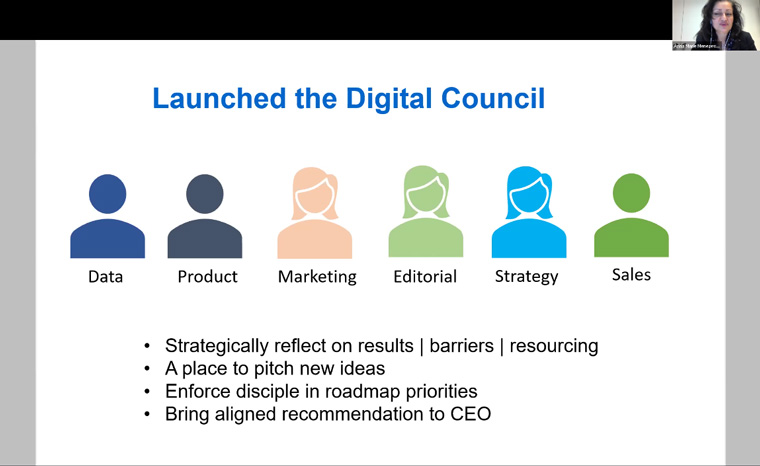Bild, Torstar made content, pricing, leadership changes to grow subscriptions
World Congress Blog | 12 May 2022
A new video platform.
Personalised pricing — set by reader habits and journalists instead of an algorithm.
A Digital Council, created from leaders in multiple departments to set the agenda and pace for new ideas.
These ideas are working, growing digital subscriptions at Bild in Germany and Torstar in Canada. Speaking on day three of the INMA World Congress of News Media, sponsored by Piano, representatives from Bild and Torstar shared what their companies have done in recent years to increase digital subscriptions. The World Congress continues throughout May on Tuesdays and Thursdays. Registation is available here for all or individual sessions.
Bild Group invested in video, personalised pricing
Innovation looks many different ways for Bild. First, they invested in a whole new infrastructure to build a format for live video journalism.
“The key of our brand is to be close to the people to really drive engagement,” said Carolin Hulshoff Pol, managing editor at Bild. “We realise we need more video all of the time.”

The core of the video programme is a daily live segment with news and current topics that starts in the morning. The programme focuses on politics, sports, and crime. Bild doesn’t hesitate to interrupt programming, no matter the time, for live breaking news.
“Linear TV might not be the newest invention itself, but still it’s Germany’s biggest advertising market with 46% of market share,” Hulshoff Pol said.
In comparison, print and digital are between 12% and 13% each. Bild hopes to connect this video strategy to the digital structure and extend it to OTT platforms.
“It is kind of the missing piece in our 360 degree media brand story,” Hulshoff Pol said.
Research Bild conducted shows they can expect their live video strategy to continue to grow through 2025 in subscription and ad-based models. Bild also realised video was the way to go when trying to attract a younger audience. The vision is to deliver the best video experience on all screens without sacrificing content.
“We focus on the development and construction of an editorial-focused video infrastructure,” Hulshoff Pol said.
The next piece of the innovation puzzle for Bild was pricing. Taking a page out of airlines’ playbook, Bild knew each plane ticket price was different for each customer.
“Since this is not really a topic customers talk to each other about, we asked ourselves why we shouldn’t do exactly the same for our content subscription,” Hulshoff Pol said.
Bild had to find the balance between growing visits on their site to monetise by advertising and growing their number of subscribers to boost sales revenues. This is why they implemented a freemium model in 2013. Most content they offered for free, but some was behind the paywall.

“The journalists decide which article is offered for free and which is paid. It’s not an algorithm,” Hulshoff Pol said.
In the past, they had one price point for subscribers and did special offers from time to time. When this method wasn’t working for them any longer, they challenged themselves and set new goals, including dynamic pricing and personalisation.
“With personalisation, we show every user the most interesting content with the right paid model with the right price at the right time,” Hulshoff Pol said.
Bild started this journey in 2020 with many tests. Some were successful and some failed, but they were able to collect data and developed an algorithm. They needed to find the best price based on a user’s behaviour to get them to subscribe.
By investing in data science and after a year of testing, Bild increased the number of Bildplus subscribers by 20%.
Torstar created a Digital Council
Torstar has more than 50 Web sites, seven daily newspapers, and one million registered users.
The media company’s subscription acquisition model that features an algorithm based paywall, Anna Marie Menezes, vice president and head of digital subscriptions and marketing, told World Congress attendees.
The hybrid paywall was put in place to protect their best content. Torstar set its paywall prices and terms to attract higher lifetime value subscribers but also to closely manage the return of lower lifetime value customers.

Over the past three years, Torstar went from acquiring 100% of their subscriptions via the paywall, to about 60%, with 40% generated from other forms of promotion.
To address many different challenges, Torstar launched a Digital Council, made up of leadership from data, product, marketing, editorial, strategy, and sales departments. The team was set up to strategically reflect on results, barriers, and resourcing to then pitch new ideas, enforce roadmap priorities, and decide what they wanted to take to the next level.

The Council realised each topic they worked through fell into one of three different categories:
- Web site container changes: The Council would review new content and then review the customer experience. From there, they would decide to launch and track results.
- Paywall changes: The Council would ask for a specific reason for the change. They would then evaluate what the customer experience would become with these new changes. Before any type of launch, if approved, the changes would be tested.
- Product roadmap changes: Menezes described the process of deliberating on changes that would impact their product roadmap as a lengthy one. “This is where we do ask if we have a benchmark … we also ask what is our return on investment if we make this change, and then it boils down to prioritisation,” she said.
With their new collaborative process and now the Digital Council, Menezes presented an example of how their efforts came together and resulted in a 10x increase in subscriptions.
Follow coverage of the World Congress here and via #INMA2022.
































